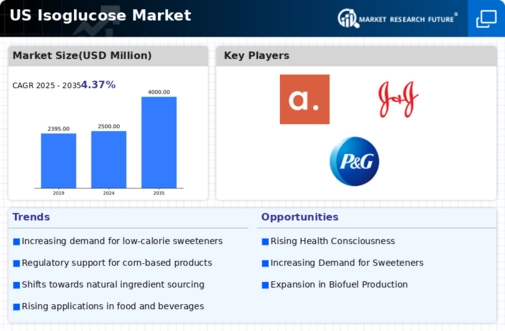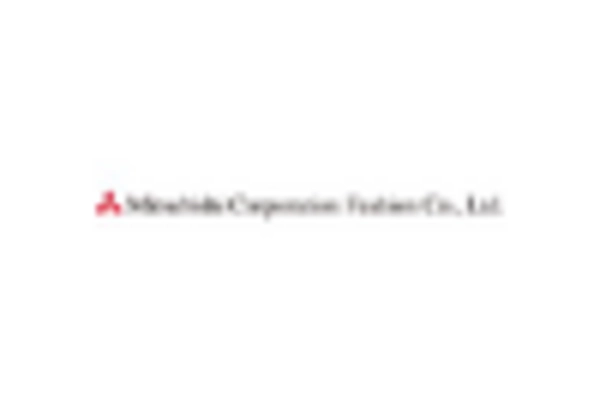Shifts in Consumer Preferences
Consumer preferences are evolving, with a notable shift towards products that contain isoglucose. This change is influenced by the increasing popularity of processed foods and beverages that utilize isoglucose as a sweetener. The isoglucose market is benefiting from this trend, as manufacturers are reformulating their products to include isoglucose, which offers a cost-effective alternative to sugar. In the US, the market for soft drinks and snacks that incorporate isoglucose is expanding, with sales projected to grow by 4% annually. This shift indicates a broader acceptance of isoglucose in various food applications, suggesting a promising future for the isoglucose market as it aligns with consumer demands for taste and affordability.
Increasing Health Consciousness
The growing awareness of health and wellness among consumers is driving the isoglucose market. As individuals become more health-conscious, they are seeking alternatives to traditional sweeteners that may contribute to health issues such as obesity and diabetes. Isoglucose, being a high-fructose corn syrup, is perceived as a healthier option due to its lower glycemic index. In the US, the demand for low-calorie and low-sugar products has surged, with the market for low-calorie sweeteners projected to reach approximately $1.5 billion by 2026. This trend indicates a shift in consumer preferences, which is likely to benefit the isoglucose market as manufacturers adapt their product lines to meet these evolving demands.
Rising Demand in the Beverage Industry
The beverage industry is experiencing a notable increase in the demand for isoglucose, driven by changing consumer preferences and the need for cost-effective sweetening solutions. As manufacturers seek to reduce production costs while maintaining product quality, isoglucose has emerged as a preferred ingredient in soft drinks and energy beverages. The US beverage market is projected to grow by 5% annually, with isoglucose playing a crucial role in this expansion. This trend suggests that the isoglucose market is well-positioned to capitalize on the growing beverage sector, as companies increasingly incorporate isoglucose to meet consumer demands for flavor and affordability.
Technological Advancements in Production
Innovations in production technology are significantly impacting the isoglucose market. Advances in enzymatic processes and fermentation techniques have enhanced the efficiency of isoglucose production, leading to reduced costs and improved product quality. For instance, the introduction of more effective enzymes has increased the yield of isoglucose from corn, making it a more attractive option for manufacturers. The US market has seen a rise in the adoption of these technologies, with production capacities expanding to meet the growing demand. As a result, the isoglucose market is likely to experience growth driven by these technological improvements, which not only lower production costs but also enhance the sustainability of the manufacturing process.
Regulatory Support for Corn-Based Products
Regulatory frameworks in the US are increasingly supportive of corn-based products, including isoglucose. The government has implemented policies that promote the use of corn as a feedstock for sweeteners, which has bolstered the isoglucose market. These regulations aim to enhance domestic production and reduce reliance on imported sweeteners. Additionally, subsidies for corn farmers have contributed to lower raw material costs, making isoglucose a more competitive option in the sweetener market. As a result, the isoglucose market is likely to benefit from these favorable regulatory conditions, which encourage the growth of corn-based sweeteners in various food and beverage applications.

















Leave a Comment